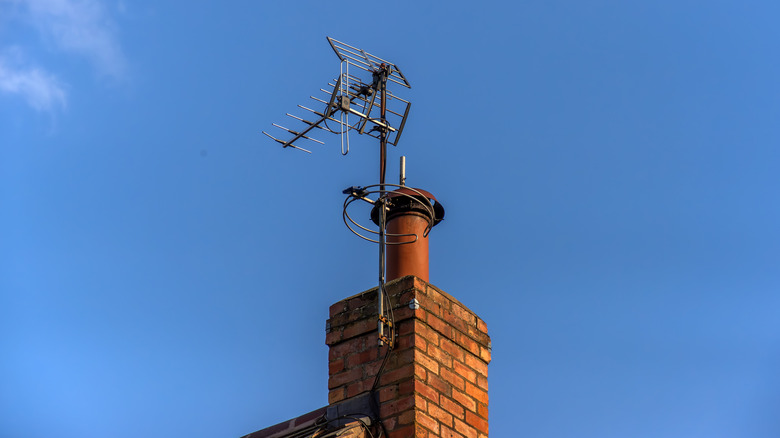Is It Still Practical To Use A TV Antenna In 2025?
There was a time when antennas were the norm for TVs in homes throughout the United States. Without them, many people wouldn't have been able to watch TV at all. Even some of today's Smart TVs have built-in antennas that receive broadcast signals. But if you thought standalone TV antennas were just an ancient relic, think again: they're definitely making a comeback in 2025.
That's because federal rules require that people still be able to get TV programming from local broadcast stations. This includes news, sports, major networks, and even emergency alerts. Plus, due to modern digital capability, TV antennas can deliver picture and sound that's often better than what you get from terrestrial cable. So if your home internet isn't reliable, you can still enjoy quality TV. The best part is that TV antennas are affordable, with some models costing under $20 on Amazon. It's a one-time investment that doesn't require a subscription, and if you don't like it, you could just try one of the many free streaming apps instead.
About 1 in 5 homes with broadband internet now have a TV antenna to get a little something extra. So, you could pay for Disney+ to get your movie fix, and use a TV antenna to check out new shows on NBC. Despite how you pair it, an antenna provides free and easy TV whenever you want it.
From cable and satellite to antenna
TV antennas are becoming so popular that about 23 percent of people who have canceled either their cable or satellite subscription are now using them. This follows a trend of cord-cutting that's risen over the past several years, as many households have dropped traditional TV. In 2024 alone, around 4.9 million people eliminated their cable and satellite, bringing the overall number to 39.3 million. This number is up from the year before, and it doesn't appear to be slowing down.
But if you switch to a TV antenna, beware that installation can be very simple, or a bit tricky. Many indoor models can be easily placed on a shelf or near a window. The higher and closer you can get to the window, the better, as digital signals can be blocked by walls and other objects. Once it's set, just take your home's incoming coaxial cable and connect it to your TV. From there, you can scan for channels, broadcast via UHF and VHF signals from local towers.
Or you can choose an outdoor antenna, which might be the best option if you have more than one TV, as it will perform better than its indoor counterpart. An outdoor antenna connects via the coaxial cable system as well, and the same rules regarding height apply. So you'll want to carefully install it on your roof, or maybe your garage, with a clear line of sight.

